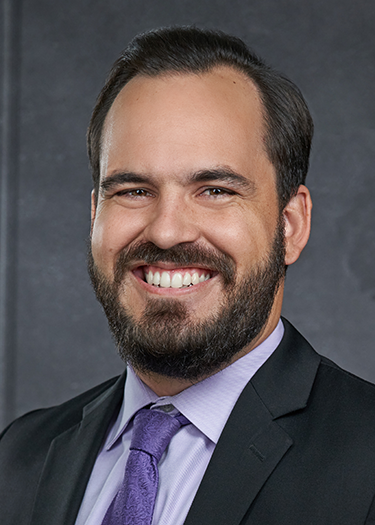The Second Circuit first articulated the test for “undue hardship” more than two decades ago in Brunner v. New York State Higher Education Services Corp., 831 F.2d 395 (2d Cir. 1987). Since that time, Brunner and the so-called Undue Hardship Test have been viewed as the only game in town regarding whether a student loan obligation was dischargeable in bankruptcy. However, there have been significant changes in both the Undue Hardship Test and the general legal regime regarding student loan debt that should inform the decision making of those seeking to discharge any student loan debt.
Undue hardship
Brunner and the Undue Hardship Test have become synonymous with harsh results and the notion that student loans are non-dischargeable to all but the most destitute student loan borrower. However, as discussed in the recent case In re Rosenberg, courts have shown a willingness to find the Brunner test has been applied in an unduly punitive way. 610 B.R. 454, 456 (Bankr. S.D.N.Y. 2020). In Rosenberg, the Debtor, Kevin Rosenberg, took out $116,000 in student loans which had subsequently grown to $221,000. Despite graduating from law school and being physically and mentally fit, Mr. Rosenberg never practiced law. The financial information he provided to the bankruptcy court showed that he was perpetually underwater in terms of his income versus his expenses. The court further found that, despite his financial troubles, Mr. Rosenberg had made sincere, good faith efforts to try to repay his student loans at various points. Bankruptcy Judge Cecilia Morris concluded that Mr. Rosenberg met the “undue hardship” standard and, therefore, was entitled to a bankruptcy discharge of his student loans. The judge specifically rejected the rigidity of the undue hardship standards established by prior courts, writing that this particular court would not “participate in perpetuating these myths” that it is impossible to discharge student debt in bankruptcy. Rosenberg, 610 B.R. 454, 459.
Eligibility of student loans
Outside of the Undue Hardship Test, there has been a growing trend of courts finding that private student loans fail to fall under the aegis of Section 523(a)(8) of the Bankruptcy Code. This trend is encapsulated in the recent Tenth Circuit case of In re McDaniel. No. 18-1445 (10th Cir. Aug. 31, 2020). While McDaniel is the most recent circuit court case to tackle this analysis, it is not the first. See In re Crocker, 941 F.3d 206 (5th Cir. 2019), as revised (Oct. 22, 2019).
In McDaniel, the Tenth Circuit tackled whether private educational loans are subject to discharge. The Tenth Circuit emphasized that exceptions to discharge should be interpreted narrowly in favor of the debtor. The Tenth Circuit focused on use of the terms “educational loan” versus “obligation to repay funds received as an educational benefit” and concluded that these clearly mean separate things. The term “educational benefit” is more akin to the other terms in section 523(a)(8)(A)(ii) (scholarship and stipend) which “signify granting, not borrowing.” In the Court’s view, normal speakers of English use the term “benefits” in the context of things such as health benefits, unemployment benefits, or retirement benefits to imply a payment, gift, or service, not something that needs to be repaid. If section (A)(ii) included repaying private student loans as an “educational benefit,” section (A)(i) would be redundant and contrary to the canon against surplusage. The Court concluded that “an obligation to repay funds received as an educational benefit” signifies a conditional grant of funding for education, akin to a stipend and scholarship, as opposed to a loan of funds for education. In other words, “[s]ubsection (A)(ii) was designed to except from discharge grants of money that are tied to service obligations – a category wholly distinct from loans.” Therefore, the student loans were discharged as part of the McDaniels’ bankruptcy case.
In layman’s terms, the McDaniels case stands for the proposition that a private student loan that was funded directly to the student and could be used for any collateral expense incurred relative to obtaining an education should be treated as a typical loan in bankruptcy and not afforded the protections typically available to student loan debt.
Predictions
Attacking the eligibility of private student loans has become a popular trend in student loan litigation. The recent successes at the circuit court level will likely bolster this trend. Further, attacking the underlying eligibility of the student loan avoids the difficult and embarrassing analysis found in the Undue Hardship Test. In this author’s opinion, attacking the underlying eligibility of a private student loans will continue to grow in popularity due to the recent circuit court successes.
About the author

John Schneringer, Esq. is an associate attorney at Goldsmith & Guymon, P.C. He practices in a variety of fields, including Bankruptcy, Estate Planning, and Trust and Estate Litigation.
About this article
This article was originally published in the “Bankruptcy Law” issue of Communiqué, the official publication of the Clark County Bar Association, (April 2021). See https://clarkcountybar.org/about/member-benefits/communique-2021/communique-april-2021/.
© 2021 Clark County Bar Association (CCBA). All rights reserved. No reproduction of any portion of this issue is allowed without written permission from the publisher. Editorial policy available upon request.
